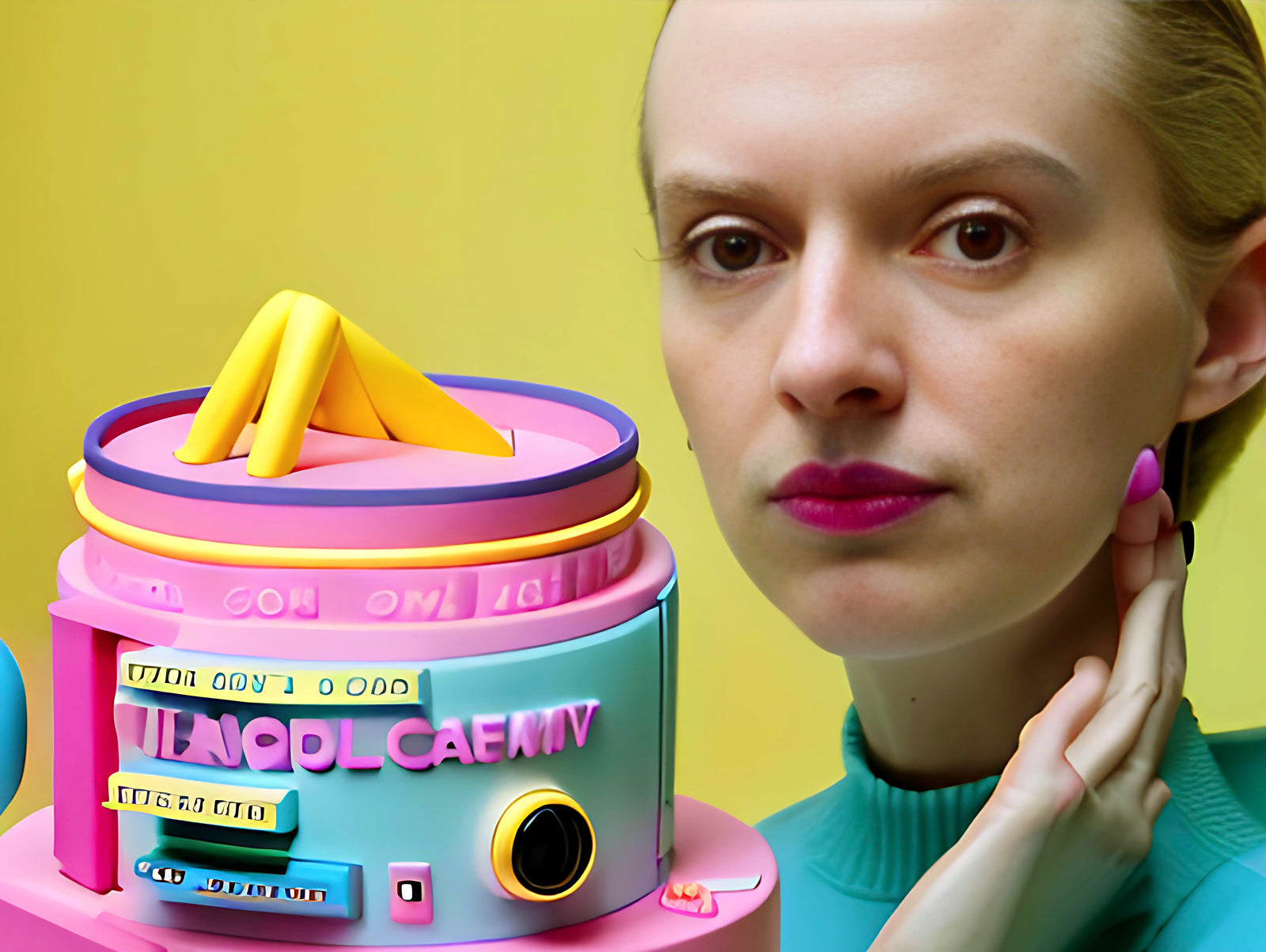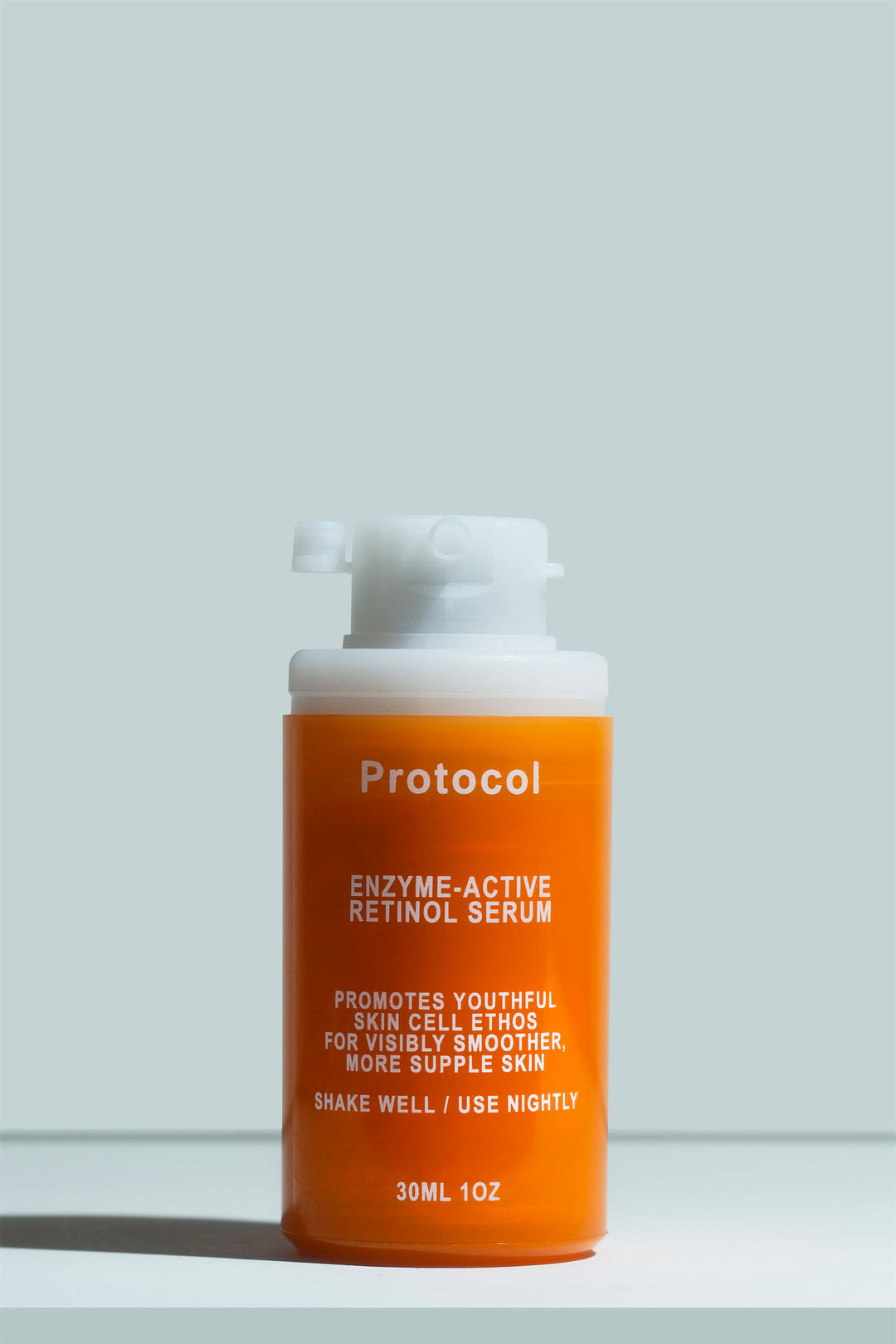Retinal - Learn All About Retinaldehyde in Skincare

Retinal, a type of vitamin A, has been generating a lot of buzz in the skincare world recently, and for an excellent reason. This ingredient is unbeatable when it comes to anti-aging, but it goes beyond that to brighten and clarify the skin on a molecular level.
Don’t confuse it with retinol - the two ingredients are related, but that little “a” where there’s normally an “o” is actually a signal that you’re getting 20 times the power.
What is retinal?
Retinal is vitamin A in a form that’s especially ideal for the skin.
Its name is short for retinaldehyde, but don’t let the long, scary-sounding name fool you. Retinal is an aldehyde of vitamin A, which means that it belongs to a class of organic compounds with a very specific structure. There are plenty of aldehydes that exist in nature, like vanillin which is found in vanilla beans.
In fact, when we consume vitamin A, we naturally convert it into retinal (and then into retinoic acid), which allows our body to use it.
How does retinal work in skincare?
In skincare, retinal has many of the same effects as other forms of vitamin A. It’s excellent for improving skin texture, addressing fine lines, and increasing skin clarity and evenness.
When you apply retinaldehyde to your skin, it interacts with naturally-present enzymes that convert it into retinoic acid. Retinoic acid can directly interact with receptors in the skin, to regulate and improve overall skin cell differentiation and regeneration. That leads to better production of the proteins responsible for skin firmness.
Normally, these types of conversion processes aren’t very efficient, but the enzymatic transformation of retinal to retinoic acid is a major exception. Research shows that retinal is as effective as retinoic acid at visibly reducing signs of photoaging like fine lines and wrinkles.
It’s worth mentioning that full-strength retinoic acid has a high likelihood of irritating the skin, which is why it’s only available by prescription in most countries. Retinal presents a potent yet gentle option that’s available as a cosmetic!
What does retinaldehyde do for your skin?
It’d be easier to explain what retinaldehyde doesn’t do. Retinal’s benefits for the skin are pretty broad since it can improve the look of just about any skin concern. That said, here are some of the main reasons why you’d want to start using it:
- Anti-aging: It’s most common as an anti-aging ingredient with a well-documented ability to visibly fade signs of skin aging. Research shows that within months of use, it can dramatically improve the look of both fine lines and coarse wrinkles, helping the skin achieve a much more youthful look.
- Brightening: While we usually think of vitamin C as the skin-brightening go-to, retinoids are also very effective if you’re dealing with discoloration or dark marks in your skin. When it comes to retinal, specifically, one study showed that a 0.1% formula effectively reduced discoloration, leading to more even-toned skin. That means that if you have dark spots or pigmentation, it’s well worth a try.
- Smoothing: Most anti-aging research also found that retinaldehyde significantly improves skin texture, contributing to skin that looks and feels a lot smoother.
- Clarifying: There’s not as much research here, but many of our customers do find that just like with retinoic acid, retinal also seems to help keep their skin looking clear from breakouts. One study found that a combination of retinal and glycolic acid (found in our cleanser) can amplify the benefits of dedicated acne treatments, while a smaller study showed it could even be useful on its own.
Retinal or retinol - which is better?
The incredible thing about retinal is that it delivers the same dramatic benefits as retinoic acid but without the same risk of irritation. Retinol, while largely non-irritating, just doesn’t have the same profound impact on the skin. In other words, in a retinal vs retinol showdown, retinaldehyde is clearly the superior cosmetic retinoid.
The reason for this is pretty simple - when you apply retinol to your skin, it actually has to turn into retinaldehyde first! Then it converts into retinoic acid, which is when it can finally impact the skin.
The step where retinol converts into retinal is much less efficient than the step where retinal converts into retinoic acid. In practice, this means that retinol is about 20 times weaker than retinaldehyde.
At the same time, retinaldehyde doesn’t seem to be more irritating than retinol. While irritation and purging are extremely common with full-strength retinoic acid, the vast majority of our clients have reported zero irritation from using our retinal serum.
Retinal side effects
We already touched on how retinal is gentler than retinoic acid, but does it have any potential side effects? As with any potent skincare ingredient, there are some very mild potential retinal side effects that you might want to be aware of, even though they don’t occur in most cases.
In clients with acne-prone skin, we do find that a small amount may experience a bit of purging, which is a minor breakout that occurs as the skin’s regeneration process speeds.
It is possible (though unlikely) that retinaldehyde may cause slight irritation, in the form of redness, flakiness, or stinging. It’s usually best to increase moisturization while still using the product until the skin becomes acclimated and the irritation stops. This is far more common with full-strength retinoic acid.
How to choose effective retinal products
There’s a lot to love about retinal, but there’s also one very major drawback: It’s extremely unstable (as is its weaker younger brother, retinol). Most brands skip it altogether in favor of ultra-weak but easy-to-formulate vitamin A derivatives.
There are a few hoops that brands have to jump through in order to make sure that their retinal products actually work. So if you’re shopping, here are the things to look for:
- UV-proof, oxygen-free packaging. Retinal or retinol packaged in jars or dropper bottles is a total waste of your time. Even the typical airless pump isn’t as airless as people think, which is why we developed our own ingredient fortress with a new technology that’s much more effective at keeping our products fresh.
- Listed 0.1% concentration. Retinal is most effective at 0.1%, which is the concentration that allows it to smooth and brighten the skin.
- Bright friggin’ yellow. Vitamin A is naturally very vibrant. To make sure your product is fresh and uses a high enough concentration of retinal, you want it to be vividly colored.
Giving retinal our A-game
When developing Protocol Skincare, how could we refuse the cosmetic world’s most potent skin-transforming molecule? We wanted to create a product line that would give our friends maximum effects with the least amount of effort… For the end users, that is.
There was plenty of effort on our end. The greatest challenge was developing a truly oxygen-free process from start to finish. Even the tiniest exposure to air during production or packaging would have rendered our finished serum useless.
By working with a team of aerospace engineers, we developed our little orange ingredient fortress, that keeps it fresh and potent from start to finish. The result? The Enzyme-Active Retinol Serum, a bright yellow-orange, 0.1% retinal serum that smooths the skin within weeks.
It’s fair to say that we gave retinal our A-game. So how about you give your skin the same treatment?




